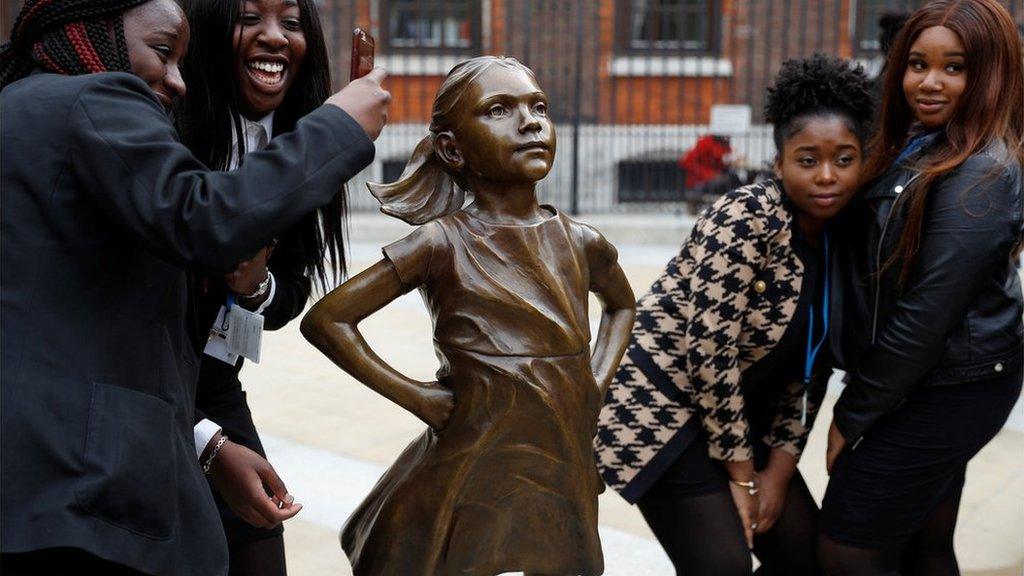Edward Colston: Why are people arguing about statues?
- Published
- comments
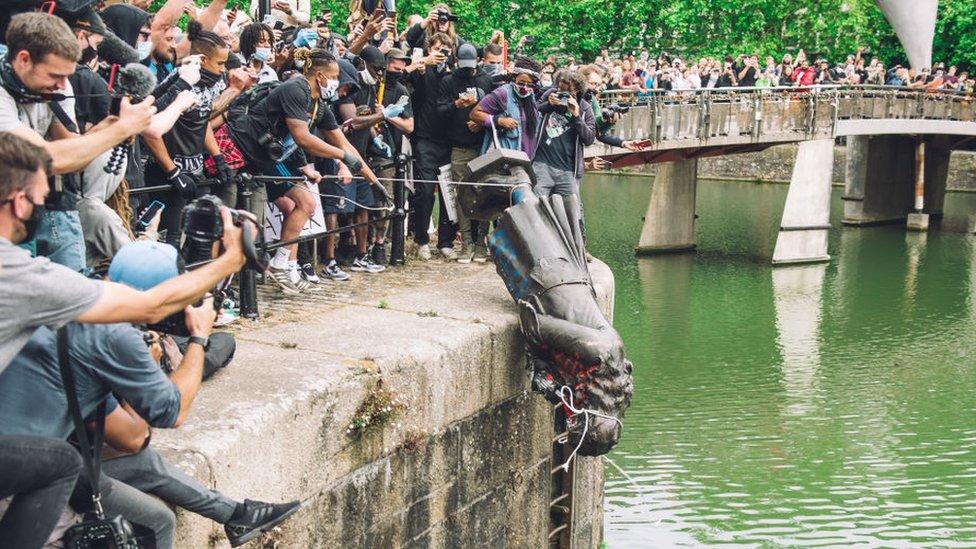
Anti-racism protesters threw the statue of slave trader Edward Colston into the harbour
Across the UK there are lots of statues, but why are they there and who decides who should get one?
Should it be a mark of history or a recognition of good deeds - or both?
During a protest against racial inequality, sparked by the death of George Floyd, some demonstrators in Bristol pulled down a statue of a slave trader and threw it into the harbour.
It has since been announced that statue has been taken out of the harbour to be cleaned before becoming a museum exhibit.
The demonstrators have faced criticism for what they did, but it has got people talking about why the statue of a slave trader was standing in a UK city in 2020.
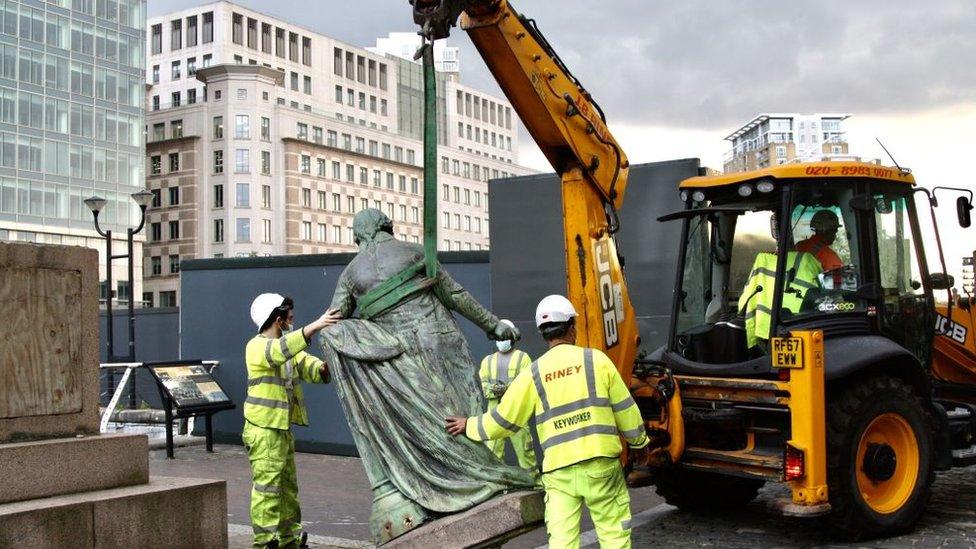
The statue of Robert Milligan was covered with fabric and Black Lives Matter sign before being removed
Who was Edward Colston
The statue that was pulled down in Bristol was of a man named Edward Colston and, in fact, some groups have been calling for the statue to be removed for many years.
He was a slave trader in the 17th century (1600s) and part of a group called the Royal African Company, which transported about 80,000 men, women and children as slaves from Africa to the Americas.
It made him very rich and when he died in 1721, he left a lot of money to charities and good causes.
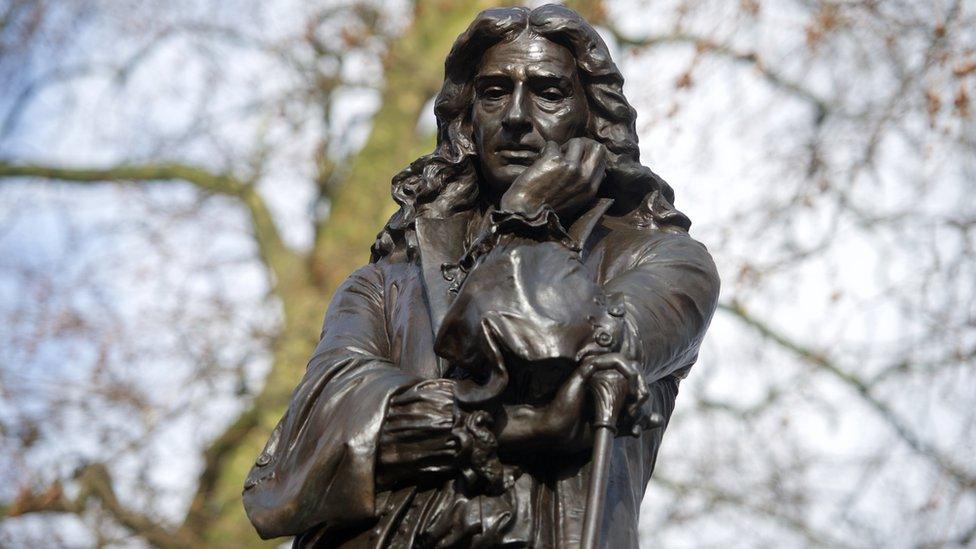
The statue of the slave trader and philanthropist was erected in 1895
It's why buildings, streets and even schools in the city have his name on them - and why this statue was put up in 1895.
But many people have argued that it's not right that a slave trader should be celebrated in this way.
After the statue was pulled down, Prime Minister Mr Johnson's office said: "The PM absolutely understands the strength of feeling, but in this country we settle our differences democratically and if people wanted the removal of the statue there are democratic routes which can be followed."
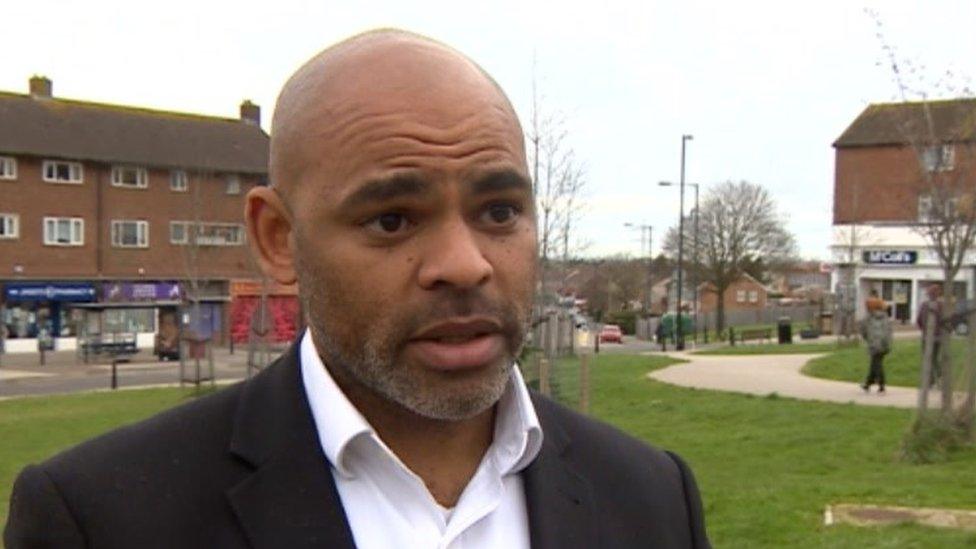
Marvin Rees, the mayor of Bristol City Council, said the statue was an "affront" to him
The mayor of Bristol, Marvin Rees, has said: "As an elected politician, obviously I cannot condone the damage... (but) I can't and won't pretend the statue of a slave trader in a city I was born and grew up in wasn't an affront to me and people like me.
"People in Bristol who don't want that statue in the middle of the city came together and it is my job to unite, hear those voices and hold those truths together for people for who that statue is a personal affront."
So, why do we build statues of people in the UK and how should we decide if and when it's time for them to be removed?
Why do we have statues of people?

The statue of Mary Seacole stands opposite the Houses of Parliament in the grounds of St Thomas' Hospital
There are more than 800 public statues of people in the UK. They range from mythical Greek and Roman figures, to soldiers, British Royalty, and important people from history.
Statues can be seen as a way to celebrate, remember and tell the stories of culturally or historically significant people.
Some also argue that statues are an important 'window' into the past as they reflect who - and what - was important at the time they were built.
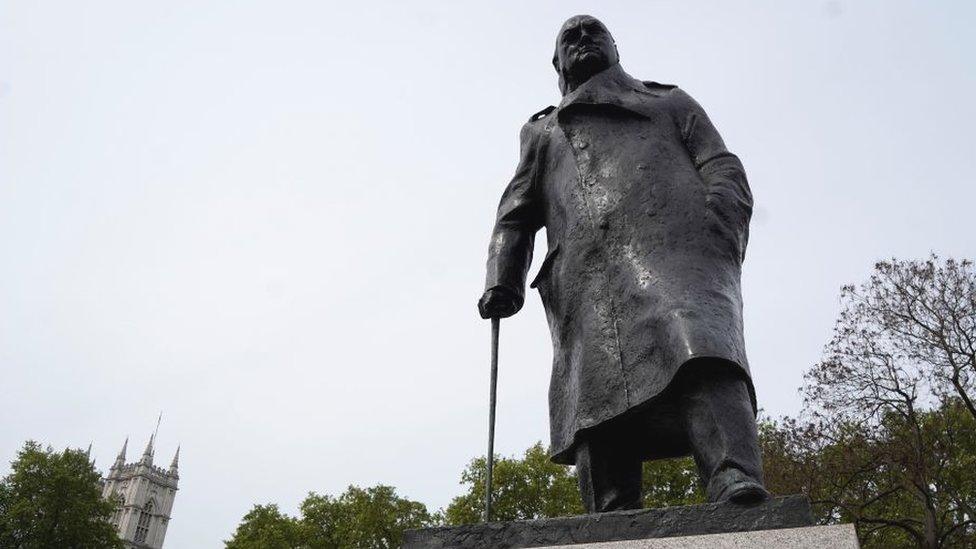
A statue of former Prime Minister Winston Churchill in Westminster
There are lots of statues of important historical people in the UK, including William Shakespeare and Emmeline Pankhurst. There are also politicians such as Winston Churchill and former monarchs including Queen Victoria.
But it has been pointed out that most of the statues in the UK don't reflect the country's diverse population and are traditionally focused on white men. For instance a statue of Mary Seacole, unveiled in 2016, was believed to be the UK's first in honour of a named black woman.
The decision about erecting a statue is usually made by local authorities and there isn't a set process for how the decision is made and who's opinions have to be asked.
Why are some statues controversial?
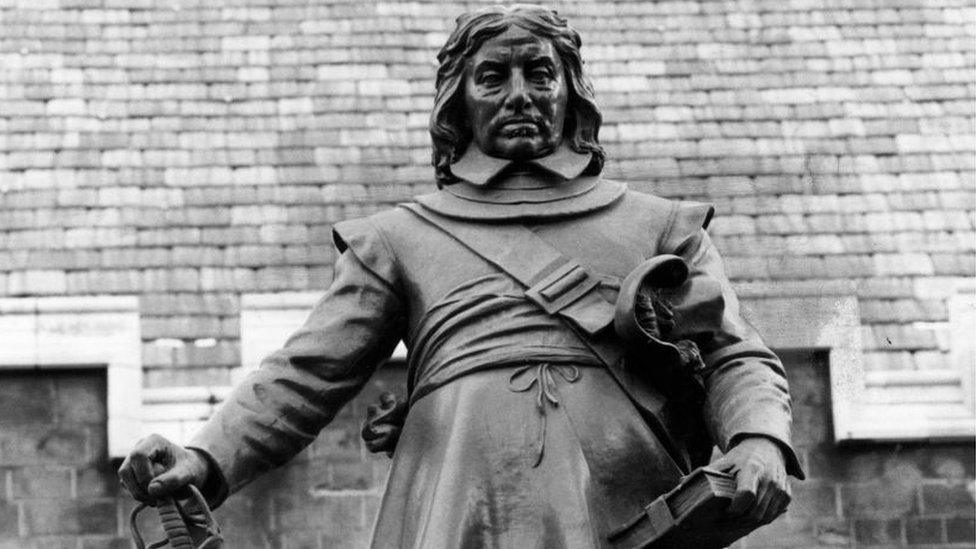
Some of the statues in the UK are considered to be controversial because of the actions, beliefs or views held by the figures when they were alive.
The statue (and person) might not have been seen as controversial when it was put up, but public attitudes can change over time.
If something is controversial it divides opinions - this means people can't agree and have opposite views on it.
One example of this is Oliver Cromwell. Some see him as a key figure in bringing democracy to UK Parliament, while others argue he was responsible for the deaths of many Irish people in the 1600s.
Some Members of Parliament (MPs) have campaigned for his bronze statue to be melted down.

The statue of Cecil Rhodes in Oxford
There has also been a long campaign to remove a statue of Cecil Rhodes, a 19th Century businessman and politician in southern Africa, from Oxford University. He contributed a lot of money to the university but many people argue he represented a racist outlook on the world.
Since the events in Bristol, London Mayor Sadiq Khan has asked for a review into the capital city's statues, whilst a statue of noted slaveholder Robert Milligan was removed from where it stood outside the Museum of London Docklands..
This is also a big issue in America - some statues of Confederates leaders have been removed, or damaged.
The Confederates were the losing side during the American Civil War, which was triggered, in part, by a dispute between states over wanting to maintain slavery. Many people believe Confederate statues and flags are symbols of racism.
Should statues be removed?
There is a lot of debate about what should happen to controversial statues in the UK and lots of different viewpoints.
Some people oppose the removal of any statue because it is like erasing history and argue that people in the past can't be judged by attitudes today - statues should be preserved because they teach people about the past, even if it is seen as unpleasant now.
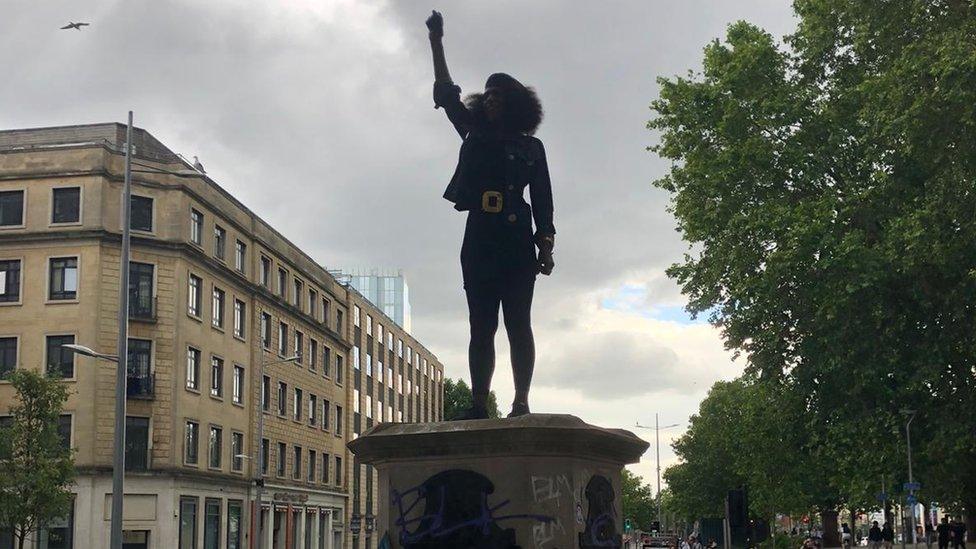
This statue of protestor Jen Reid was temporarily placed where Edward Colston's once stood but was later removed by the council
It has also been suggested that statues shouldn't be removed but new plaques could be added which explain why the person is controversial, for example reflecting both the good and bad things they did.
Others say the statues could be removed and put on display in museums so people can still learn about them. That way they can illustrate how society has changed, teach us about key periods in history and reflect lessons that can be learnt from the past.
Another opinion is that outdated or controversial statues should be removed completely and replaced with other people who represent modern society.
During his many interviews on this issue, the Mayor of Bristol, Marvin Rees, argued that it was normal that historical statues would reflect the values of the society that erects them, but that shouldn't necessarily mean they should stay for ever.
He felt that as society's values change, there should be more debate about which statues should stand in our towns and cities.
- Published8 April 2019

- Published7 June 2020
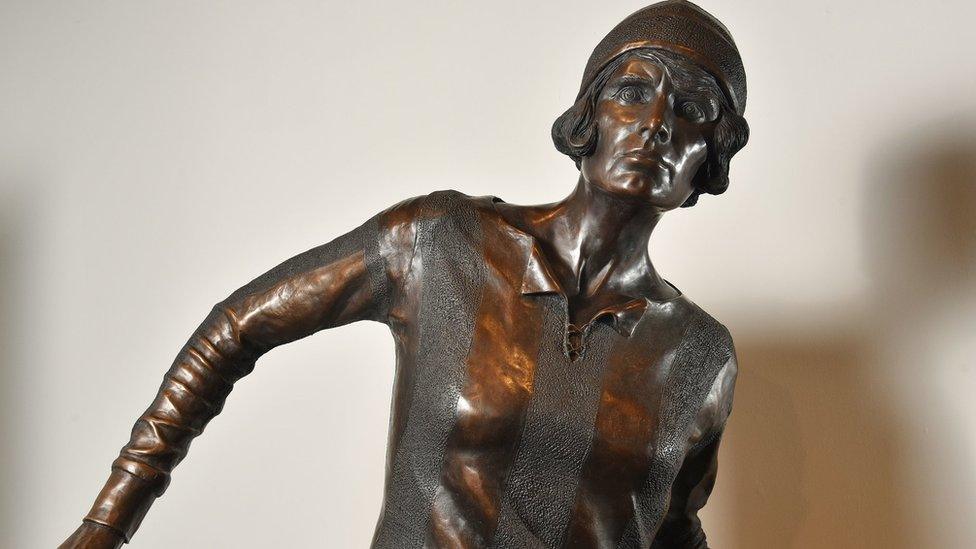
- Published8 March 2019
